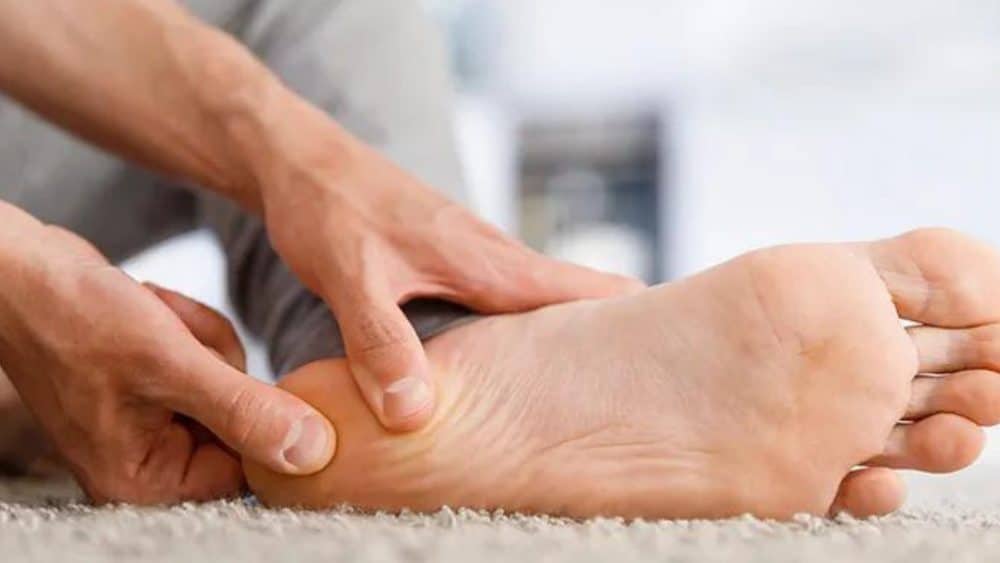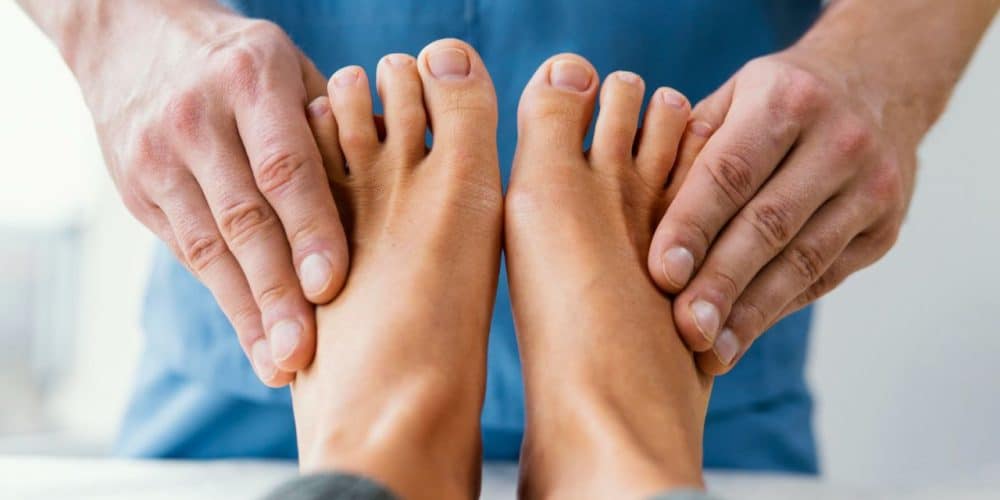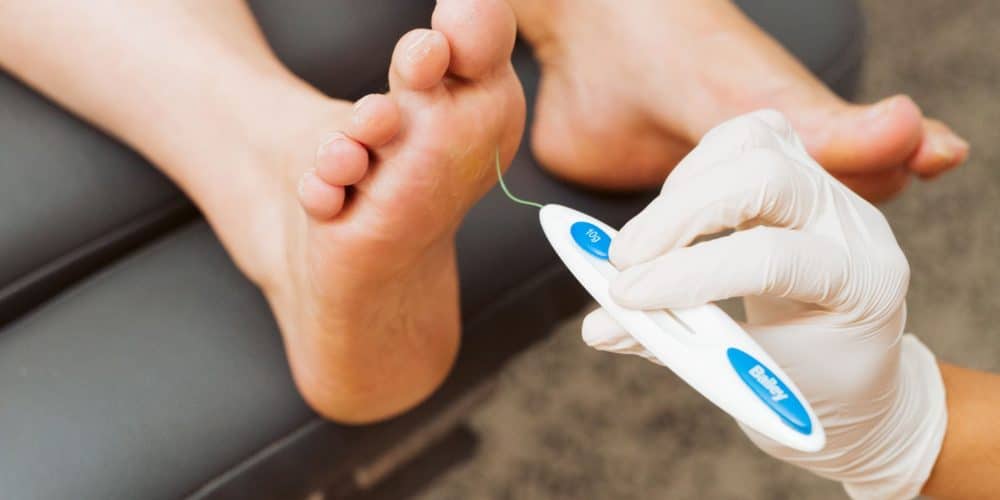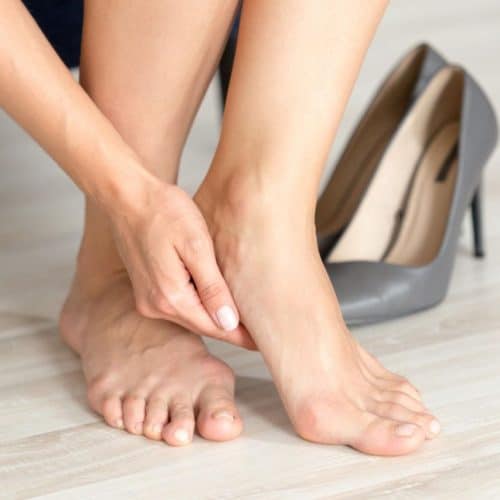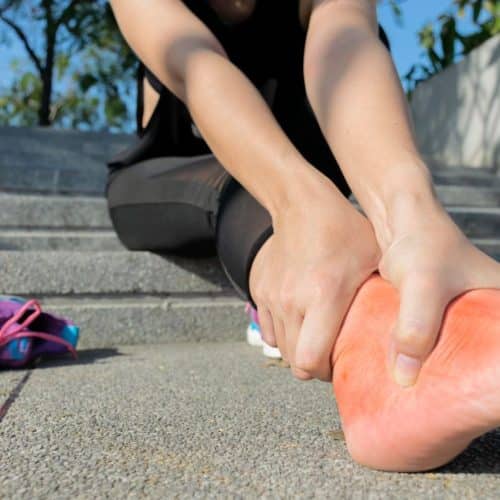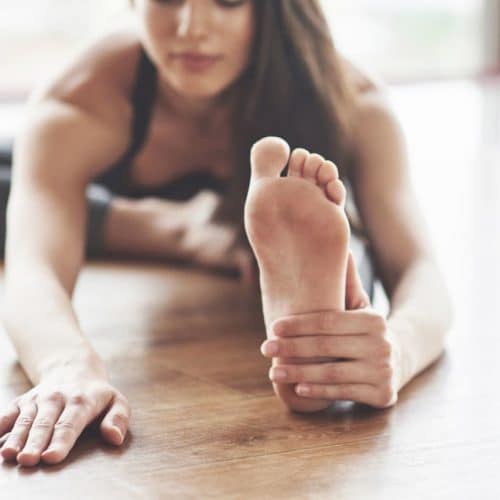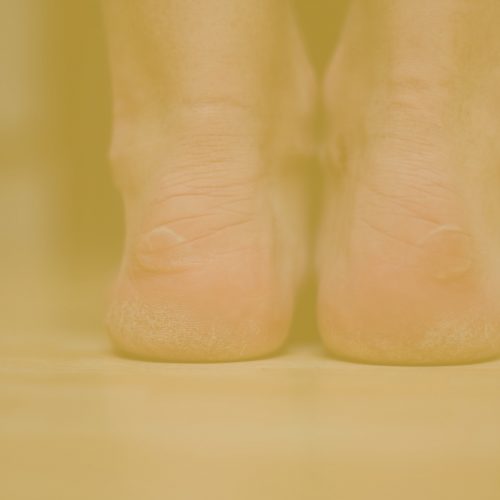Are you tired of starting your day with excruciating heel pain that hampers your every step? If so, we’ve got a solution for you! Plantar Fasciitis can be a real pain in the foot, quite literally. But fear not, because this article will unveil some highly effective stretches that can help soothe that nagging heel pain and get you back on your feet pain-free. Say goodbye to wincing with each step, and let’s explore the world of plantar fasciitis stretches that will bring relief to your feet.
With our expert-recommended plantar fasciitis stretches, you’ll discover the key to alleviating your heel pain in a few moments. Say farewell to constant discomfort as we reveal the top exercises that target and ease the tension in the plantar fascia.
Whether you’re a seasoned sufferer or experiencing this for the first time, our concise guide will give you all the information you need to bid farewell to heel pain. Get ready to take charge of your foot health and discover why these stretches significantly impact countless individuals dealing with plantar fasciitis.
Don’t let plantar fasciitis hold you back any longer; take the first step towards relief and read on to discover the secrets to soothing heel pain with targeted stretches. Your feet deserve the best care, and we’re here to guide you every step of the way.
Let’s dive into the realm of effective plantar fasciitis stretches and bid farewell to heel pain for good. Let us know your thoughts on these exercises and how they’ve helped you in the comments below!
Understanding Plantar Fasciitis
1. What is Plantar Fasciitis?
Plantar fasciitis is a common and frequently painful foot ailment that affects the plantar fascia, which is a thick band of connective tissue that runs down the bottom of the foot, from the heel to the toes.
A number of different factors, including overuse, injury, or inflammation of the plantar fascia, can cause plantar fasciitis. During movements such as walking, running, and other weight-bearing exercises, the plantar fascia serves as a shock absorber and also helps to maintain the arch of the foot.
Plantar fasciitis can occur if the plantar fascia is overworked to the point that it becomes irritable and swollen. This ailment is common among people who are overweight, engage in activities that need them to be on their feet for lengthy periods of time, and sports. On the other hand, it can strike anybody, regardless of their age or their degree of physical activity.
2. Causes of Plantar Fasciitis
Plantar fasciitis is often the result of repetitive stress on the foot, causing small tears and inflammation in the plantar fascia. Some common factors that contribute to the development of plantar fasciitis include:
- Overuse and Activities: Engaging in activities that put excessive strain on the feet, such as running, jumping, or standing for long periods, can lead to plantar fasciitis.
- Foot Mechanics: Individuals with certain foot mechanics, such as flat feet or high arches, may be more prone to plantar fasciitis as these conditions can alter the weight distribution on the foot.
- Inadequate Footwear: Wearing shoes that lack proper arch support or have worn-out soles can increase the risk of developing plantar fasciitis.
- Age: Plantar fasciitis is more common in individuals between 40 and 60, although it can occur at any age.
- Obesity: Excess weight can strain the plantar fascia, increasing the likelihood of inflammation and pain.
3. Common Symptoms
A distinct pattern of symptoms characterises plantar fasciitis, typically centred around the heel and the bottom of the foot. The most common symptoms include:
- Heel Pain: The pain that is felt in the heel, characteristic of plantar fasciitis, is typically described as acute and stabbing. The discomfort is typically at its worst when you first start moving about in the morning or after long periods of inactivity.
- Stiffness: Many individuals with plantar fasciitis experience stiffness in the foot, particularly after sitting or resting for extended periods.
- Pain with Activity: The pain may worsen with weight-bearing activities, such as walking, running, or climbing stairs.
- Tenderness: The bottom of the foot, particularly the heel, may be tender to the touch.
- Pain Relief with Rest: Resting the foot and avoiding activities that exacerbate the pain often bring relief.
It’s essential to seek early treatment if you suspect you have plantar fasciitis, as delaying treatment can lead to chronic pain and a more challenging recovery. A podiatrist can provide an accurate diagnosis and recommend appropriate treatment options based on the severity of the condition.
The Importance of Stretching
The pain that is associated with plantar fasciitis must be managed, and stretching is an essential component in this process. You may enhance the flexibility of the plantar fascia and the muscles that surround it by including frequent stretching exercises as part of your daily routine. This can help minimise muscular stress and promote the body’s natural ability to recover.
1. How Stretching Helps Plantar Fasciitis
When the plantar fascia becomes inflamed and tight, it can result in intense heel pain and stiffness. Stretching the plantar fascia helps to lengthen and loosen the tissue, easing the strain on the affected area. As the tissue becomes more supple, the pressure on the heel and arch of the foot is reduced, decreasing pain and discomfort.
Moreover, stretching also enhances blood circulation to the injured area, facilitating the delivery of essential nutrients and oxygen to support the healing process. It also aids in the removal of metabolic waste and inflammatory by-products, contributing to a faster recovery.
2. Perplexity and Burstiness in Stretching Techniques
To ensure maximum effectiveness, it’s crucial to employ various stretching techniques with different intensities. Perplexity, or variability in stretches, prevents the foot muscles from adapting to repetitive motions, ensuring a more comprehensive workout for the entire foot region.
Incorporating burstiness into stretching involves performing short, intense stretches followed by brief rest periods. This approach keeps the muscles engaged and challenged, improving strength and flexibility. Alternating between different types of stretches, such as static stretches that involve holding a position and dynamic stretches that involve movement, can further enhance the benefits.
3. Precautions Before Starting the Stretches
Before initiating any stretching routine, taking certain precautions is essential to ensure safety and effectiveness. Here are some guidelines to consider:
- Warm-Up: Always warm up your feet and calf muscles before stretching to prevent injuries. Gentle movements, such as ankle circles and foot flexes, can help prepare the muscles for more intense stretches.
- Start Gradually: If you’re new to stretching or have a severe case of plantar fasciitis, start with mild stretches and gradually increase the intensity and duration over time.
- Listen to Your Body: How your foot responds to the stretches. If you experience excessive pain or discomfort, ease off the stretch or stop altogether. Feeling some tension is normal, but sharp pain should be avoided.
- Consistency: Consistency is key when it comes to stretching. Perform the stretches daily or as a podiatrist recommends for the best results.
- Combine with Other Treatments: Stretching should be part of a comprehensive treatment plan for plantar fasciitis. Combining stretching with other interventions is essential, such as wearing appropriate footwear, using orthotic inserts, and following self-care measures.
By following these guidelines and incorporating a mix of perplexity and burstiness in your stretching routine, you can effectively soothe heel pain, enhance foot flexibility, and support the healing process of plantar fasciitis. Remember that patience and perseverance are essential, as improvements may take time. Still, with regular stretching and proper care, you can find relief from plantar fasciitis and get back to enjoying your daily activities pain-free.
Plantar Fascia Stretch
Stretching the plantar fascia is one of the fundamental approaches to relieving the discomfort of plantar fasciitis. These stretches specifically target the thick band of tissue that runs along the bottom of the foot, helping to increase its flexibility and reduce tension. Regularly performing these stretches can significantly alleviate heel pain and improve foot mobility.
1. Towel Stretch
The towel stretch is a simple yet effective exercise for stretching the plantar fascia and calf muscles.
- Sit on the Floor: Begin by sitting on the floor with your legs extended in front of you.
- Loop a Towel: Take a towel and loop it around the ball of your foot, holding both ends firmly with your hands.
- Gently Pull Toward You: Slowly pull the towel towards you while keeping your knee straight. You should feel a gentle stretch along the arch of your foot and the back of your calf.
- Hold and Relax: Hold the stretch for about 20 to 30 seconds, breathing deeply and relaxing into the stretch.
- Repeat the Stretch: Repeat the stretch 3 times on each foot.
The towel stretch helps elongate the plantar fascia and calf muscles, alleviating the tightness and discomfort associated with plantar fasciitis.
2. Wall Calf Stretch
The wall calf stretch targets the calf muscles closely connected to the plantar fascia.
- Stand Facing a Wall: Stand facing a wall with your hands pressed against it at shoulder height.
- Step Back with One Foot: Take a step back with one foot, keeping it straight and the heel flat on the ground.
- Bend the Front Knee: Bend the front knee slightly while keeping the back leg straight. You should feel a stretch in your calf and the back of your lower leg.
- Lean Forward: Gently lean your body forward, pressing your hips towards the wall. This intensifies the stretch.
- Hold and Relax: Hold the stretch for about 20 to 30 seconds, feeling the tension release in your calf.
- Switch Sides: Return to the starting position and switch legs to stretch the other calf.
Repeat this stretch 3 times on each leg. The wall calf stretch stretches the calf muscles and indirectly stretches the plantar fascia, contributing to pain relief and improved flexibility.
3. Staircase Stretch
The staircase stretch is an effective way to stretch both the calf muscles and the plantar fascia simultaneously.
- Stand on the Stairs: Stand on the edge of a staircase or a stable elevated platform with the balls of your feet on the step and your heels hanging off the edge.
- Lower Your Heels: Slowly lower your heels below the level of the step, allowing your calf muscles and the plantar fascia to stretch.
- Hold the Position: Hold the stretch for about 20 to 30 seconds, feeling the stretch along your calves and the arch of your foot.
- Rise Up: Gently rise back up to the starting position.
- Repeat the Stretch: Repeat the stretch for a total of 3 times.
The staircase stretch is particularly beneficial for stretching the plantar fascia, allowing for a deeper and more targeted stretch.
Performing these plantar fascia stretches regularly can aid in reducing heel pain, enhancing foot flexibility, and contributing to the overall management of plantar fasciitis. However, remember to be gentle and listen to your body, avoiding overstretching or causing additional strain. If you experience persistent or worsening pain, consult a podiatrist for further evaluation and guidance.
Achilles Tendon Stretch
Stretching the Achilles tendon is essential for managing plantar fasciitis, as these two structures are closely connected. Keeping the Achilles tendon flexible and supple can reduce the strain on the plantar fascia and alleviate heel pain. Here are some effective Achilles tendon stretches that can complement your plantar fasciitis stretching routine.
1. Ankle Circles
Ankle circles are a simple yet effective way to stretch the Achilles tendon and improve ankle mobility.
- Sit on a Chair: Begin by sitting on a chair with one leg extended before you.
- Rotate Your Foot: Slowly rotate your foot in a circular motion, clockwise and counterclockwise.
- Control the Movement: Ensure the circles are smooth and controlled, avoiding jerky or forced movements.
- Repeat on the Other Foot: After completing the circles on one foot, switch to the other foot and repeat the same motion.
- Repeat 10 Times: Perform 10 circles in each direction for each foot.
Ankle circles not only stretch the Achilles tendon but also help improve ankle joint flexibility, which can be beneficial in preventing injuries and improving overall foot function.
2. Towel Grab
The towel grab exercise is a unique way to stretch the Achilles tendon and strengthen the foot muscles.
- Place a Towel: Place a small towel on the floor before you.
- Sit on a Chair: Place the towel in front of you and sit on a chair so that your feet are flat on the floor.
- Grab the Towel: Use your toes to scrunch and grab the towel, pulling it towards you. This motion mimics picking up an object with your toes.
- Release the Towel: Relax your toes and release the towel.
- Repeat the Grab: Perform the toe grab 10 times with each foot.
The towel grab exercise stretches the Achilles tendon and helps strengthen the foot muscles, promoting better support for the arch and overall foot health.
By regularly incorporating these Achilles tendon stretches into your stretching routine, you can maintain flexibility in this crucial tendon and support the healing process of plantar fasciitis. Remember to perform the stretches gently and avoid overexertion, as excessive stretching may lead to discomfort or injury.
As with any exercise, if you experience pain or have concerns about your condition, consult a podiatrist or physical therapist for personalised advice and guidance.
Strengthening Exercises
In addition to stretching, strengthening exercises for the foot and ankle can be crucial in managing plantar fasciitis. Strengthening the muscles that support the arch and the plantar fascia can help stabilise the foot, improve overall foot function, and reduce the risk of re-injury. Here are some effective strengthening exercises to incorporate into your routine:
1. Toe Curls
Toe curls are a simple yet effective exercise to strengthen the muscles in the toes and the bottom of the foot.
- Sit on a Chair: To get started, choose a chair and put both of your feet on the ground in front of you.
- Curl Your Toes: Slowly curl your toes under as though you’re attempting to get a grasp on the ground.
- Hold the Curl: Hold the curled position for about 5 seconds, focusing on engaging the muscles in your toes and the arch of your foot.
- Release and Relax: Relax your toes and return them to a flat position.
- Repeat 10 Times: Perform 10 toe curls for each foot.
Toe curls can help strengthen the intrinsic muscles of the foot, which are essential for maintaining proper arch support and stability.
2. Marble Pickups
Marble pickups are a fun and effective exercise to strengthen the toes and the arch of the foot.
- Place Marbles on the Floor: Place a few marbles on the floor in front of you.
- Sit on a Chair: Place the soles of your feet flat on the floor and sit on a chair just behind the stones.
- Pick Up the Marbles: Use your toes to pick up the marbles individually and place them in a bowl or a cup.
- Repeat the Movement: Continue picking up marbles until you’ve collected all of them.
- Rest and Repeat: Take a short break and repeat the exercise for a few more rounds.
Marble pickups help enhance the strength and dexterity of the toes and improve the muscle control needed for proper foot mechanics.
By incorporating toe curls and marble pickups into your daily routine, you can effectively strengthen the muscles in your feet, improve balance, and promote better arch support. These exercises can complement your stretching routine and contribute to the overall management of plantar fasciitis.
Remember to perform these exercises gently and gradually increase the repetitions as your foot strength improves. If you experience discomfort or pain during the exercises, stop immediately and consult a podiatrist or physical therapist for further evaluation and guidance.
Footwear and Orthotics
Choosing the right footwear and considering orthotic support is essential for managing plantar fasciitis. Proper shoes and orthotic inserts can provide much-needed support, alleviate pressure on the plantar fascia, and promote better foot mechanics. Here are some considerations for selecting appropriate footwear and using orthotics effectively:
1. Choosing the Right Shoes
When dealing with plantar fasciitis, wearing the right shoes can significantly reduce discomfort and support the healing process. Here are some tips for selecting suitable footwear:
- Arch Support: Look for shoes with good arch support, as this helps distribute weight evenly across the foot and reduces stress on the plantar fascia.
- Cushioning: Shoes with adequate cushioning in the heel and forefoot can absorb shock during walking and running, reducing the impact on the plantar fascia.
- Heel Support: Opt for shoes with a firm heel counter, as this provides stability to the back of the foot and reduces excessive movement that may aggravate the condition.
- Proper Fit: Ensure that your shoes fit well and have enough room in the toe box to prevent crowding of the toes.
- Avoid High Heels: Steer clear of high-heeled shoes, as they can strain the plantar fascia and exacerbate the pain.
- Replace Worn-Out Shoes: Replace your shoes regularly, especially if the cushioning or support has worn out.
By wearing supportive and properly fitting shoes, you can reduce the stress on the plantar fascia and provide a more comfortable environment for your feet to heal.
2. The Role of Orthotics
Orthotic inserts are devices designed to support and correct biomechanical imbalances in the feet. They can be particularly helpful for individuals with flat feet, high arches, or abnormal foot mechanics contributing to plantar fasciitis. Here’s how orthotics can aid in managing the condition:
- Customised Support: Custom orthotics are tailored to your specific foot structure and needs, providing personalised support and alignment.
- Arch Support: Orthotics can offer targeted arch support, especially beneficial for those with flat feet or fallen arches.
- Pressure Redistribution: By redistributing pressure on the foot, orthotics can alleviate strain on the plantar fascia and promote a more natural gait.
- Shock Absorption: Orthotic inserts with cushioning properties can absorb shock during walking and reduce the impact on the plantar fascia.
- Correcting Foot Mechanics: Orthotics can help correct issues like overpronation or supination, improving foot alignment and reducing strain on the plantar fascia.
It’s essential to consult with a podiatrist to determine whether orthotic inserts suit your condition. They can assess your foot structure and gait and recommend the most appropriate type of orthotics.
By paying attention to your footwear choices and, if needed, using orthotic inserts, you can create a supportive environment for your feet and contribute to the successful management of plantar fasciitis. Remember that a combination of proper footwear, orthotic support, stretching, and strengthening exercises can provide comprehensive care for your feet and help you stay active and pain-free.
Home Remedies and Self-Care
In addition to stretching, strengthening exercises, and proper footwear, there are several effective home remedies and self-care practices that can aid in relieving plantar fasciitis symptoms and promoting healing.
These simple yet practical measures can be easily incorporated into your daily routine to support your foot health. Here are some beneficial home remedies and self-care practices for managing plantar fasciitis:
1. Ice Massage
Ice massage is a simple and effective way to reduce inflammation and alleviate pain in the affected area.
- Freeze a Water Bottle: Fill a water bottle with water and freeze it until it becomes ice-cold.
- Sit Comfortably: Sit on a chair or a comfortable surface.
- Roll the Frozen Bottle: Place the frozen water bottle under your foot and gently roll it back and forth, applying light pressure.
- Focus on the Heel: Concentrate on massaging the heel and the arch of your foot, where the plantar fascia is located.
- Duration: On each foot, perform the ice massage for about 10 to 15 minutes.
Ice massage helps reduce inflammation, soothes soreness, and numbs the pain, providing immediate relief to the affected area.
2. Rolling Pin Exercise
The rolling pin exercise is an effective way to stretch and massage the plantar fascia and foot muscles.
- Sit on a Chair: Sit on a chair and place a rolling pin or a frozen water bottle on the floor in front of you.
- Roll the Arch: Roll the arch of your foot over the rolling pin, applying gentle pressure with your hands.
- Back and Forth: Move the rolling pin back and forth along the length of the arch, from the heel to the ball of the foot.
- Repeat on Each Foot: Perform the rolling pin exercise for about 5 minutes on each foot.
This exercise helps loosen the plantar fascia, improves blood flow, and provides a soothing massage to the foot muscles.
3. Rest and Elevation
Rest is a crucial aspect of the healing process for plantar fasciitis. Resting your feet allows the inflamed tissue to recover and reduces the risk of further aggravation. Elevating your feet while resting can also help reduce swelling and promote better circulation.
- Take Breaks: If you engage in activities that stress your feet, such as standing or walking for prolonged periods, take regular breaks to rest your feet.
- Elevate Your Feet: When sitting or lying down, prop your feet on a pillow or cushion to elevate them slightly above heart level.
- Sleep with Elevated Feet: Elevate your feet while sleeping by using a pillow or raising the foot of the bed.
Incorporating regular rest and elevation into your daily routine allows your feet to heal and recover from the strain of daily activities.
4. Proper Footwear at Home
Even at home, wearing proper footwear can make a difference in managing plantar fasciitis.
- Supportive Slippers: Opt for supportive slippers or indoor shoes that provide arch support and cushioning.
- Avoid Walking Barefoot: Refrain from walking barefoot on hard surfaces, which can strain the plantar fascia.
- Choose Comfort: Prioritise comfort over fashion when selecting indoor footwear to minimise foot strain.
By wearing supportive footwear at home, you can maintain proper foot alignment and reduce unnecessary strain on the plantar fascia.
5. Foot Soaks
Warm foot soaks can provide relaxation and help alleviate foot pain.
- Prepare a Foot Soak: Fill a basin with warm water and add Epsom salts or a few drops of essential oils for added benefits.
- Soak Your Feet: Immerse your feet in warm water and soak for 15 to 20 minutes.
- Pat Dry: Gently pat your feet dry with a soft towel after the soak.
Soothing discomfort, easing muscular tension, and providing a peaceful sensation for your feet are all benefits that may be achieved via the use of foot soaks.
Incorporating these home remedies and self-care practices into your daily routine can complement your overall plantar fasciitis management plan. These simple yet effective measures can aid in reducing pain, inflammation, and discomfort, allowing you to take an active role in supporting the healing process of plantar fasciitis.
Remember to be consistent and patient with these practices, as healing may take time. If your symptoms persist or worsen, consult a podiatrist for further evaluation and guidance.
Maintaining Healthy Feet
Maintaining overall foot health is essential for preventing problems like plantar fasciitis. By incorporating healthy habits into your daily life, you can support your feet’s well-being and reduce the risk of developing foot-related issues. Here are some valuable tips for maintaining healthy feet:
1. Proper Foot Hygiene
Good foot hygiene is the foundation of healthy feet. Follow these practices to keep your feet clean and free from infections:
- Daily Washing: Wash your feet with soap and water daily, paying attention to the spaces between your toes and the soles of your feet.
- Thorough Drying: After washing, dry your feet thoroughly, especially the areas between the toes. Moist environments can promote fungal growth.
- Trimming Nails: Trim your toenails straight across and avoid cutting them too short to prevent ingrown toenails.
- Moisturising: Apply moisturiser to keep your feet hydrated, but avoid applying it between the toes to prevent excessive moisture buildup.
- Rotate Shoes: Allow your shoes to air out between uses to prevent bacteria and fungi from thriving inside.
2. Foot Exercises
Like any other body part, your feet benefit from regular exercises to maintain strength and flexibility. Simple exercises can be performed daily to promote foot health:
- Toe Flexing: Flex your toes up and down several times daily to improve blood circulation and maintain toe mobility.
- Ankle Circles: Rotate your ankles in clockwise and counterclockwise circles to maintain ankle flexibility.
- Calf Raises: Stand flat on the ground, raise your heels, and lower them back down. Repeat this exercise to strengthen the calf muscles.
3. Regular Foot Inspections
Regularly inspecting your feet can help detect any issues early and prevent them from worsening. Check your feet for the following:
- Cuts or Abrasions: Look for cuts, abrasions, or blisters on your feet. Promptly clean and dress any wounds to prevent infections.
- Changes in Skin Color or Texture: Note any changes in the colour or texture of your skin, as they may indicate an underlying issue.
- Unusual Growths or Bumps: Be aware of any unusual growths or bumps on your feet, as they may require medical attention.
4. Appropriate Footwear
Choosing the right footwear is crucial for maintaining healthy feet. Follow these guidelines when selecting shoes:
- Proper Fit: Ensure your shoes fit well, providing adequate room for your toes and preventing crowding.
- Arch Support: Select shoes with good arch support to maintain proper foot alignment and reduce strain on the plantar fascia.
- Cushioning: Opt for shoes with sufficient cushioning to absorb shock during walking and running.
- Avoid High Heels: Limit high-heeled shoes, as they can cause stress on the plantar fascia and contribute to foot discomfort.
5. Professional Foot Care
Regular visits to a podiatrist or a foot specialist can be beneficial for maintaining healthy feet, especially if you have pre-existing foot conditions or concerns. A professional can provide personalised advice, address foot issues, and recommend appropriate treatments or interventions.
Adopting and incorporating these healthy habits into your daily routine can support your feet’s health and reduce the risk of developing plantar fasciitis and other foot-related problems.
Remember that caring for your feet is an investment in your overall well-being and mobility. If you experience persistent foot pain or have specific foot health concerns, consult a podiatrist for proper evaluation and guidance.
Conclusion
In conclusion, incorporating specific plantar fasciitis stretches into your daily routine can effectively and naturally soothe heel pain and promote overall foot health. Plantar fasciitis is a common condition that can cause significant discomfort, and seeking relief through stretches is a proactive step towards better mobility and reduced pain. Remember to consult a podiatrist or a physical therapist before starting any new exercise routine, especially if you have existing foot conditions or concerns.
Following the plantar fasciitis stretches demonstrated in this blog, you can target the tightness and inflammation in the plantar fascia, which is essential for alleviating heel pain. The stretches are simple yet effective and can be easily integrated into your daily schedule, whether at home or work.
Have you ever experienced plantar fasciitis or heel pain? If so, what strategies have you tried to alleviate the discomfort? If you haven’t encountered this issue, do you plan to incorporate these plantar fasciitis stretches into your daily routine as a preventive measure?
Share your thoughts and experiences in the comments below, and let’s discuss plantar fasciitis stretches and their impact on foot health. We can support each other in our journey towards pain-free feet and increased well-being. Remember, taking care of your feet is taking care of your foundation for a healthier, happier life.
Content Summary
- Plantar Fasciitis can be a real pain in the foot, quite literally.
- But fear not, because this article will unveil some highly effective stretches that can help soothe that nagging heel pain and get you back on your feet pain-free.
- Say farewell to constant discomfort as we reveal the top exercises that target and ease the tension in the plantar fascia.
- Don’t let plantar fasciitis hold you back any longer; take the first step towards relief and read on to discover the secrets to soothing heel pain with targeted stretches.
- Plantar fasciitis is often the result of repetitive stress on the foot, causing small tears and inflammation in the plantar fascia.
- Engaging in activities that strain the feet, such as running, jumping, or standing for long periods, can lead to plantar fasciitis.
- A distinct pattern of symptoms characterises plantar fasciitis, typically centred around the heel and the bottom of the foot.
- The pain that is felt in the heel, which is characteristic of plantar fasciitis, is typically described as acute and stabbing.
- The pain that is associated with plantar fasciitis must be managed, and stretching is an essential component in this process.
- You may enhance the flexibility of the plantar fascia and the muscles that surround it by including frequent stretching exercises as part of your daily routine.
- To ensure maximum effectiveness, it’s crucial to employ various stretching techniques with different intensities.
- Stretching should be part of a comprehensive treatment plan for plantar fasciitis.
- The towel stretch is a simple yet effective exercise for stretching the plantar fascia and calf muscles.
- The wall calf stretch targets the calf muscles closely connected to the plantar fascia.
- The staircase stretch is an effective way to stretch both the calf muscles and the plantar fascia simultaneously.
- Stretching the Achilles tendon is essential for managing plantar fasciitis, as these two structures are closely connected.
- The towel grab exercise is a unique way to stretch the Achilles tendon and strengthen the foot muscles.
- In addition to stretching, strengthening exercises for the foot and ankle can be crucial in managing plantar fasciitis.
- By incorporating toe curls and marble pickups into your daily routine, you can effectively strengthen the muscles in your feet, improve balance, and promote better arch support.
- Choosing the right footwear and considering orthotic support is essential for managing plantar fasciitis.
- By wearing supportive and properly fitting shoes, you can reduce the stress on the plantar fascia and provide a more comfortable environment for your feet to heal.
- It’s essential to consult with a podiatrist to determine whether orthotic inserts suit your condition.
- They can assess your foot structure and gait and recommend the most appropriate type of orthotics.
- By paying attention to your footwear choices and, if needed, using orthotic inserts, you can create a supportive environment for your feet and contribute to the successful management of plantar fasciitis.
- On each foot, perform the ice massage for about 10 to 15 minutes.
- The rolling pin exercise is an effective way to stretch and massage the plantar fascia and foot muscles.
- Perform the rolling pin exercise for about 5 minutes on each foot.
- Rest is a crucial aspect of the healing process for plantar fasciitis.
- By wearing supportive footwear at home, you can maintain proper foot alignment and reduce unnecessary strain on the plantar fascia.
- Incorporating these home remedies and self-care practices into your daily routine can complement your overall plantar fasciitis management plan.
- By incorporating healthy habits into your daily life, you can support your feet’s well-being and reduce the risk of developing foot-related issues.
- Good foot hygiene is the foundation of healthy feet.
- Repeat this exercise to strengthen the calf muscles.
- Regularly inspecting your feet can help detect any issues early and prevent them from worsening.
- Look for cuts, abrasions, or blisters on your feet.
- Choosing the right footwear is crucial for maintaining healthy feet.
- Regular visits to a podiatrist or a foot specialist can be beneficial for maintaining healthy feet, especially if you have pre-existing foot conditions or concerns.
- Adopting and incorporating these healthy habits into your daily routine can support your feet’s health and reduce the risk of developing plantar fasciitis and other foot-related problems.
- Remember that caring for your feet is an investment in your overall well-being and mobility.
- In conclusion, incorporating specific plantar fasciitis stretches into your daily routine can effectively and naturally soothe heel pain and promote overall foot health.
- Following the plantar fasciitis stretches demonstrated in this blog, you can target the tightness and inflammation in the plantar fascia, which is essential for alleviating heel pain.
- Remember, taking care of your feet is taking care of your foundation for a healthier, happier life.
FAQs
1. Can I do these stretches every day?
Yes, these stretches are safe to perform daily. However, start with a few repetitions and gradually increase as your comfort level improves.
2. How long will it take to see results?
The timeline for improvement varies from person to person. Some may experience relief within a few weeks, while others may take several months. Consistency is key.
3. Are there any other treatments for plantar fasciitis?
Yes, treatments may include physical therapy, anti-inflammatory medications, corticosteroid injections, and shockwave therapy, depending on the severity of the condition.
4. Can wearing high heels worsen plantar fasciitis?
Yes, wearing high heels can exacerbate the condition by putting extra pressure on the plantar fascia. Opt for supportive shoes instead.
5. Can I still exercise with plantar fasciitis?
Low-impact exercises like swimming and cycling are usually safe. However, avoid high-impact activities that may strain the foot, such as running or jumping.


